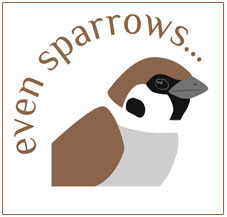

CUTHBERT AND THE BIRDS EATING BARLEY
Posted: 07.03.24 in Articles category
In Northumberland we remember St Cuthbert in March as his Feast Day falls on the 20th. Our local saint is probably best-known for his remarkable rapport with various animals and birds. Cuthbert’s kindness and gentleness towards wild creatures and domestic animals soon became legendary with tales of penitent ravens, body-drying otters and fish-sharing eagles. Yet despite the ‘Cuddy’s duck’ association that has been made between the 7C Northumbrian saint and Eider duck, neither the writings of Bede nor the anonymous monk (the two contemporary sources on Cuthbert) mentioned the bird directly.
One of the stories that is told about St Cuthbert and wild birds relates to his time as a hermit on Inner Farne. He preferred to grow his own crops so that he could live in self-sufficiency. However, Cuthbert’s initial attempts to plant cereals were unsuccessful when the wheat he sowed in the spring failed to grow. Undaunted, he planted some barley as an alternative, despite it being too late for planting, and this grew quickly to produce a large crop. As it started to ripen, a flock of birds came to eat the barley and thereby deprive the saint of his source of food. Yet Cuthbert did not try to chase them off. Instead, he approached them in a friendly manner and asked them politely why they were eating crops that they had not sown. Cuthbert continued to talk to them in the same way: “Perhaps you need the crops more than I do. If you have permission from God, do what he has allowed you to do. If you do not have permission, go away and do not harm things which belong to someone else.” When he finished, the flock of birds took flight and never again attacked Cuthbert’s crop of barley.
Bede featured this story in chapter 19 of his hagiography, ‘The Life of Cuthbert’. He didn’t identify the birds and we are left to speculate what types they might have been. One modern author has suggested these could have been species of finch like the Greenfinch or Goldfinch – birds known to gather in post-breeding flocks. However, Bede’s intention was not to provide an avian record. Throughout his narrative Bede sought to present Cuthbert’s holiness as an English saint worthy of veneration. Hence in talking to birds which subsequently flew away, Cuthbert was following the example of another venerated saint – St Antony of Egypt. According to Bede, this 4C Desert Father dissuaded wild asses from devouring the garden he had planted merely by speaking to them.